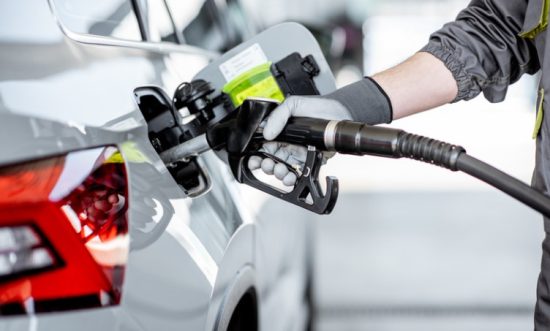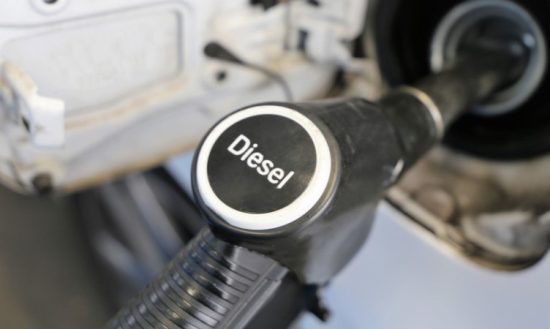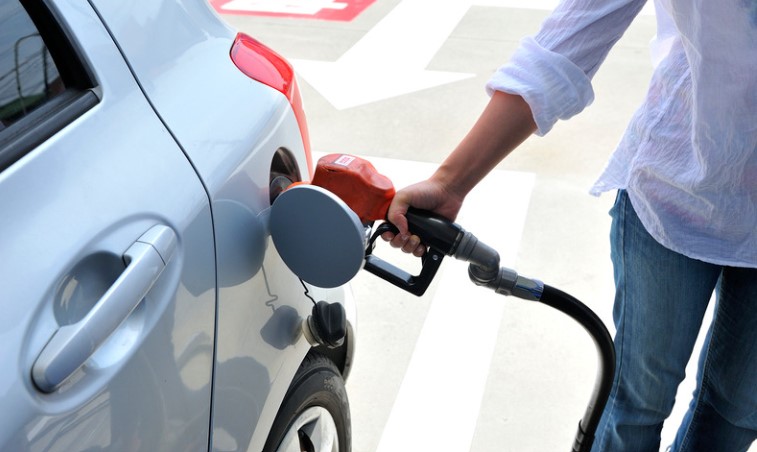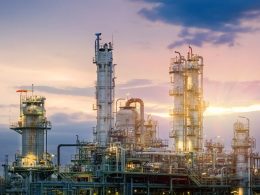Gas prices always seem to rise, but have you ever stopped to wonder why? Ontario drivers currently face some of the highest gas prices in Canada, and it’s not just a matter of inflation or taxes. Numerous factors at play contribute to these steep costs at the pumps. In this blog post, we’ll examine why gas is so expensive in Ontario and what you can do about it.
Why is Gas So Expensive in Ontario?
There are a variety of reasons why gas prices have been on the rise in recent years. One of the biggest reasons is the price of crude oil. Crude oil is a major component in the production of gasoline, and the cost of crude oil has been steadily increasing for years. In addition to the cost of crude oil, there are also other factors that contribute to the high cost of gasoline in Ontario.
Ontario has some of the highest taxes on gasoline in North America. The provincial government imposes a gas tax of 9 cents per litre, and the federal government adds an additional excise tax of 10 cents per litre. These taxes account for a significant portion of the price you pay at the pump.
Another factor that contributes to high gas prices is transportation costs. Ontario is a large province, and gas needs to be transported long distances to reach all areas. This transportation can add significantly to the cost of gas.
Environmental regulations are another reason why gas may be more expensive in Ontario than in other parts of Canada or North America. Gasoline producers are required to use cleaner-burning fuels, which can add to their costs. These costs are then passed on to consumers through higher prices at the pump.
What Caused the Increase in Gas Prices?

There are a variety of reasons why gas prices have increased in Ontario over the past few years. One of the main reasons is the increase in the price of crude oil. Crude oil is the major component of gasoline, so when its prices increase, so do gas prices.
Another reason for higher gas prices is the weakened Canadian dollar. When the dollar is weak, it takes more dollars to buy crude oil, which drives up gas prices. The weak dollar has also made it more expensive for Ontario businesses to purchase goods from other provinces or countries, which has contributed to inflationary pressures.
Finally, Ontario’s carbon tax has also added to the cost of gasoline. The carbon tax was introduced in 2019 and applies to all fossil fuels, including gasoline. It’s currently set at $20 per tonne of greenhouse gas emissions, which adds 4.4 cents per litre to the gas price.
Impact of Taxes on Gas Prices
The Ontario government has been imposing a gas tax on gasoline since 2010. The current tax rate is 9 cents per litre. This means that, on average, Ontarians are paying about $0.15 more per litre of gas than the rest of Canada.
The purpose of the gas tax is to discourage people from using fossil fuels, which contribute to climate change. The tax is also supposed to raise revenue for public transit and other green initiatives. However, many experts say that the gas tax is ineffective in reducing greenhouse gas emissions. And it’s not clear how much of the revenue from the tax is actually being spent on green initiatives.
What is clear is that the gas tax is making life more expensive for Ontarians, who are already struggling with high living costs. In addition to the gas tax, Ontario has some of the highest electricity rates in North America. And the provincial government has been imposing new carbon taxes and other environmental fees in recent years.
All these costs add up, making it harder for families to make ends meet. So when you hear politicians talk about “making life more affordable” for Ontarians, keep in mind that their policies are actually making life more expensive.
Exploring Different Types of Fuel and Their Cost

There are many different types of fuel, and their costs can vary greatly. Gasoline is the most common type of fuel, and it is also the most expensive. Diesel is another common type of fuel, and it is less expensive than gasoline. Natural gas is another type of fuel, and it is even less expensive than diesel.
So why is gas so expensive in Ontario? The answer has to do with supply and demand. Ontario has a very limited supply of gasoline, and there is high demand for it. This means that gasoline prices are higher in Ontario than in other parts of Canada.
Diesel is less expensive than gasoline because there is more supply of it. There are many refineries in Alberta that produce diesel, and this helps to keep the price down. Natural gas is the least expensive type of fuel because it is abundant in North America.
Changes in Demand for Gasoline Over Time
There are a number of factors that can affect the demand for gasoline, including changes in the price of oil, economic activity, weather conditions, and government policies.
In recent years, the price of oil has been volatile, which has led to fluctuations in the price of gasoline. The Organization of the Petroleum Exporting Countries (OPEC) often exerts control over the price of oil by regulating production levels. When OPEC production cuts lead to higher oil prices, this also results in higher gasoline prices.
The state of the economy can also affect the demand for gasoline. When consumers feel confident and spending is strong, they are more likely to drive more and purchase gas. However, during economic downturns or periods of high unemployment, people tend to drive less and purchase less gas.
Government policies can also impact the demand for gasoline. For example, if the government imposes a fuel tax or increases fuel efficiency standards, this will likely lead to lower demand for gas.
The Effect of Government Subsidies and Incentives on Gas Prices

Government subsidies and incentives play a significant role in gas prices. The Ontario government provides a subsidy of $0.015 per litre of gasoline to producers, reducing the pump’s price by about four cents. The federal government also provides a subsidy of $0.10 per litre of gasoline to producers, reducing the pump’s price by about two cents.
In addition, both the provincial and federal governments provide a variety of tax breaks and other incentives to encourage exploration and production of oil and gas. These subsidies and incentives have a direct impact on gas prices. When oil prices are high, as they are currently, the subsidies and incentives reduce the price of gasoline by about six cents per litre. When oil prices are low, as they were in 2015-2016, the subsidies and incentives actually increase the price of gasoline by about four cents per litre.
This is because when oil prices are low, producers don’t need as much subsidy or incentive to keep producing, so the government cuts back on these programs. As a result, gas prices fluctuate depending on global oil prices, with Ontarians paying more when oil is expensive and less when it’s cheap.
What Can We Do to Reduce the Cost of Gasoline?
The price of gasoline is a hot topic in Ontario right now. The province has some of the highest gas prices in the country, and drivers are feeling the pinch. There are a number of factors that contribute to high gas prices in Ontario. The province has high taxes on gasoline, and its proximity to oil-producing regions means that it pays more for crude oil than other parts of Canada.
However, there are some things that can be done to reduce the cost of gasoline in Ontario. The provincial government could lower taxes on fuel, for example. Alternatively, the province could invest in alternative energy sources, such as electric cars, which would help reduce the gasoline demand.
Whatever the solution, it’s clear that something needs to be done to address high gas prices in Ontario. Drivers are struggling to fill up their tanks, and this is having a knock-on effect on the economy as a whole. Hopefully, steps will be taken soon to bring down the cost of gasoline in the province.
Conclusion
In conclusion, the high cost of gas in Ontario is due to a mix of taxes, environmental regulations and other factors. It can be challenging for residents to cope with such expensive gas prices. However, there are some steps that we can take as individuals to help reduce our fuel costs. These include carpooling, driving more efficiently and using public transportation whenever possible. With these simple tips, you will be able to keep your expenses down while still getting around town without worrying about rising gas prices!
FAQ – Why Gas is So Expensive in Ontario?

Why are gas prices so high in Canada right now?
There are a few key reasons why gas prices in Canada, particularly in Ontario, are so high right now. First, crude oil prices have been on the rise in recent months, as tensions in the Middle East and other major producing regions have contributed to market uncertainty. This has translated into higher prices at the pump for consumers.
In addition, the Canadian dollar has been relatively weak against its U.S. counterpart in recent months, meaning that Canadians are paying more for imported crude oil. Many gas stations in Ontario have been hit with an unexpected carbon tax this year, which has also contributed to higher prices at the pump.
Predicting where gas prices will go in the short term is difficult. However, if crude oil prices continue to rise and the Canadian dollar remains weak, we can expect to see high gas prices throughout 2018.
Who controls gas prices in Canada?
The Canadian government has the constitutional authority to regulate petrol prices only in an emergency. Quebec and the Atlantic provinces are two examples of provinces and territories that do this. Generally, prices are driven by market forces such as supply and demand. This means that the cost of crude oil, competition between retailers, taxes, and other factors all play a role in setting the price at the pump.
Where does Ontario get its gasoline?
According to the National Energy Board, approximately 80% of the gasoline used in Ontario is imported. Most of these imports come from the U.S., with the remainder from other countries such as Saudi Arabia, Algeria, and Nigeria.
With gas prices consistently rising, it’s no wonder that Ontarians are wondering where their gas comes from. The cost of gasoline is a major concern for many people living in the province, especially those who have to commute long distances for work or school.
Does Canada produce its own gasoline?
The simple answer is no. Canada does not produce its own gasoline. The majority of the gasoline used in Canada is imported from the United States. In fact, according to the National Energy Board, about 80% of the gasoline used in Canada is imported from the United States.
How much tax is on fuel in Ontario?
The provincial government imposes a gas tax of 9 cents per litre on gasoline in Ontario. In addition to this, the federal government imposes a carbon tax of 4.4 cents per litre on gasoline, which was increased from 3.9 cents in 2019. Therefore, Ontario’s total gasoline tax is 13.4 cents per litre.










